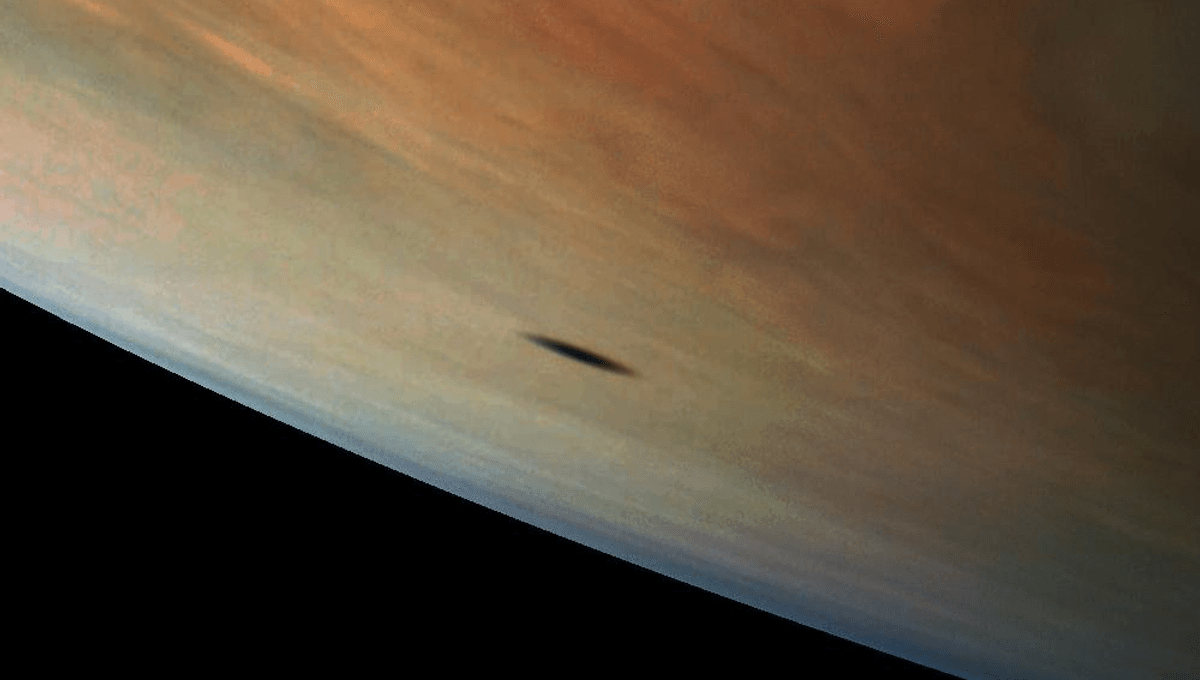
As the most massive planet in the Solar System, and first to form, Jupiter’s gravity shaped the formation of everything else. To better understand how the newborn giant threw its weight around, astrophysicists have attempted to model its early years and have come to some surprising conclusions.
Professor Konstantin Batygin of the California Institute of Technology and Professor Fred Adams of the University of Michigan think the key to understanding Jupiter’s origins lies in its moons. Not, as you might expect, the four big Galilean Moons that get most of the attention, but primarily the small moons Amalthea and Thebe that orbit closer even than Io.
Many of the smaller Jovian moons are thought to be captured asteroids, but these are the majority that exist much further out. The inner moons are probably originals. Their orbits are tilted relative to Jupiter’s equatorial plane by 0.36 and 1.09 degrees. Those would be quite small angles for more distant moons, but closer moons usually have tiny tilts.
Batygin and Adams think these tilts are a consequence of Io’s gravitational influence, allowing them to calculate Io’s (larger) orbit when the nebula from which the planet and moons formed dissipated. In turn, knowing that orbit allows a calculation of Jupiter’s size at that point in time.
The pair conclude that 3.8 million years after formation, Jupiter had 2.0-2.56 times its current radius, probably closer to the lower end of that range. That means it would have been about eight times today’s volume, so it could have fitted more than 10,000 Earths into it, instead of the current 1,300, had Earth existed then.
They also report that its magnetic field, already the strongest in the Solar System, would have been 50 times stronger still. Imagine the auroras when the early Sun flared.
The approach Batygin and Adams have taken is different from traditional attempts to reconstruct early planetary formation, which use models of how planetary cores come together. The pair instead relied on measures of Jupiter’s angular momentum and the moons’ orbital dynamics that can be made today. “It’s astonishing that even after 4.5 billion years, enough clues remain to let us reconstruct Jupiter’s physical state at the dawn of its existence,” Adams said in a statement.
On the other hand, the novelty of their approach means some assumptions may be open to question.
Jupiter’s two innermost moons, Adrastea and Metis, were not considered in the calculations because they are thought to be the legacy of a larger precursor moon, torn apart by Jupiter’s gravity. Batygin and Adams make the case for why Thebe and Amalthea were probably primordial moons, but if these two instead formed later, their conclusions might be less reliable. Batygin and Adams also rely on previous work relating Io’s orbital radius when it formed to Jupiter’s size at that time.
Aside from presenting a vision of an even more wondrous sight for tourists passing by the early Solar System, the work contributes to the debate as to whether giant planets form “bottom-up” (core accretion) or “top-down” (gravitational instability). The findings are consistent with bottom-up formation, already thought to be the mechanism by which the Solar System’s giants came to be. However, research continues as to whether top-down is a realistic possibility, at least for gas planets in other systems.
The study is published in Nature Astronomy.
Source Link: Jupiter, The Largest Planet In Our Solar System, Was Once Twice As Big